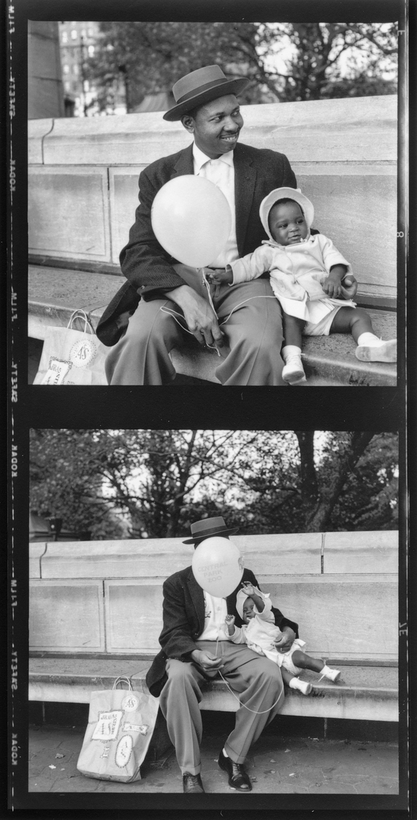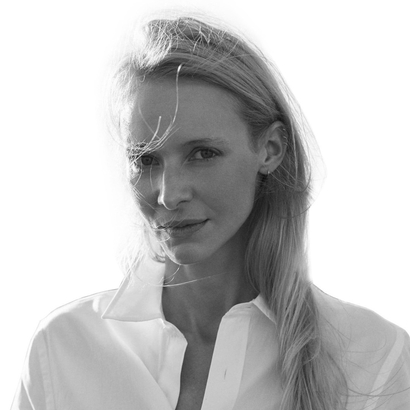In 2007, an amateur historian and flea-market enthusiast named John Maloof purchased the contents of a storage locker—sight unseen—at auction. It contained approximately 150,000 prints, negatives, transparencies, and rolls of undeveloped film. This stash was the work of a professional nanny who was obsessed with photography but who chose to show her pictures to no one. Her name was Vivian Maier, and after Maloof’s astounding discovery of her oeuvre she was soon acclaimed as an important 20th-century artist. On May 31, Fotografiska New York becomes the first institution in the United States to present a major retrospective of Maier’s work. Offering a complex portrait of this enigmatic figure, who died in 2009, the exhibition includes more than 200 photographic prints, Super 8 footage, and sound recordings.
While biographical information on the mysterious Maier is scant, we know that she was born Vivian Dorothea Maier in 1926, in the Bronx, New York. After her parents separated, and when Vivian was still young, her mother moved them to her native France, where her daughter began to hungrily document the world with her cardboard Kodak Brownie. In 1951, Maier came back to New York and the next year procured a twin-lens Rolleiflex. With the square-format camera held inconspicuously at hip height, she flourished photographically.

As the medium evolved, so did Maier: in 1973 she migrated almost exclusively to 35-mm. color transparencies. Despite her lifelong devotion to the photographic craft, Maier never attempted to parlay passion into profession. “At that time, for a person like Maier who belonged on the dark side of the American Dream, she was no one; no family; no home of her own; she was invisible,” says the exhibition’s curator, Anne Morin. “In photography, she had an identity, and she was free.”
But what, exactly, is Maier’s work? Tall in stature and perennially single, Maier was a smart, savvy first-generation American who worked for Chicago-area families with the means to employ her: as a result, socio-economics, race, class, and gender play prominently in her photographs, as do “women of a certain age,” as Maier liked to call them. While Maier’s work spans portraiture, landscape, and architecture, her essential genre is street photography.

Here her gift lay less in interpreting a scene than in distilling her societal point of view, one that produced democratic, empathetic, richly nuanced pictures that valorize the down-and-out as much as they do the upper class. Though Maier wasn’t formally trained, her large collection of art and photography books schooled her in composition and craft, and her work possesses qualities for which her contemporaries gained fame: the intentional strangeness of Diane Arbus; the humor and humanism of Lisette Model; the street savvy of Helen Levitt; the documentary mode of Margaret Bourke-White.
“I’m the mystery woman,” Maier once told the children in a family that employed her. Though she was intensely private, her work is teeming with self-portraits—some 20,000 of them made over a 45-year span—as if she used the photographic medium as a diaristic way to craft a personal, if not secret, narrative of her life.

“Maier is a phenomenon because she is a response to what is happening today in society—the big crisis of identity solved by millions of selfies on every social-media channel,” Morin says. “Maier is the face of every single person that looks at her work that has ever questioned their own identity.” Sometimes Maier’s self-portraits are reflections—in mirrors and the glass of shop windows, or in the chrome curvature of a toaster or an abandoned hubcap. Sometimes they are shadows—discernible by the floppy brim of her omnipresent hat. But they always share the same declarative resolve: to bestow permanence on the otherwise ephemeral.
“Vivian Maier: Unseen Work” opens at Fotografiska, in New York, on May 31
Tracy Doyle is a New York–based creative director who has worked with brands such as Tom Ford, Chanel, Gucci, Tiffany & Co., and Max Mara. Previously, she was a photo editor at Life and Interview magazines


